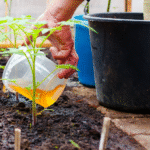Farmers’ markets offer an excellent platform for South African farmers to connect directly with consumers, increase their sales, and build a loyal customer base. These markets provide an opportunity to showcase fresh, locally grown produce and establish a presence in the local community. Whether you’re new to farmers’ markets or looking to boost your sales, here’s a guide to help you succeed.
1. Choose the Right Farmers’ Market
Not all markets are the same. It’s essential to research different farmers’ markets in your area to find one that fits your product range and target audience. Consider the following factors when choosing:
- Location: Choose markets within a reasonable distance to cut down on transport costs.
- Foot Traffic: Larger markets with higher foot traffic may lead to better sales.
- Customer Base: Some markets cater to niche audiences, such as organic or artisanal products.
- Fees: Check the cost of setting up a stall, which can vary from market to market.
2. Prepare High-Quality Products
The quality of your products is key to attracting customers. Here’s how to ensure your offerings stand out:
- Freshness: Harvest produce as close to the market day as possible.
- Presentation: Package products neatly and attractively. Use eco-friendly packaging where possible to appeal to environmentally conscious consumers.
- Consistency: Make sure the quality of your products is consistent every week to build trust with your customers.
3. Price Your Products Competitively
Pricing is crucial. Overpricing can turn customers away, while underpricing can devalue your product and hurt your profits. Consider these pricing strategies:
- Know Your Costs: Factor in production, transport, and market fees when setting prices.
- Market Research: Visit other stalls at the market to gauge how much competitors are charging.
- Offer Deals: Consider offering discounts on bulk purchases or promotions to encourage repeat customers.
4. Create a Welcoming Stall Setup
Your stall should be attractive and inviting. A well-organized, visually appealing setup can draw more attention. Tips for setting up:
- Use Signage: Clearly label your products and prices. Consider having a banner with your farm’s name and logo.
- Sample Area: Offering free samples of your products can entice customers to buy more.
- Display Creativity: Arrange your products in baskets, crates, or other rustic displays to create a market feel.
5. Engage with Customers
Building relationships with customers is one of the greatest advantages of selling at a farmers’ market. Here’s how to create a friendly atmosphere:
- Greet Every Customer: A simple smile and greeting can go a long way in making customers feel welcome.
- Share Your Story: People love buying directly from farmers. Sharing the story of your farm and how you grow your products can foster connection and trust.
- Answer Questions: Be prepared to answer questions about your farming practices, whether you use organic methods, and how to best prepare the produce you’re selling.
6. Market Your Stall Online
Even though farmers’ markets are in-person events, promoting your stall online can help attract more customers.
- Social Media: Use platforms like Instagram and Facebook to let customers know when and where you’ll be at a market. Post pictures of your produce to create interest.
- Collaborate with the Market: Many markets have their own social media pages. Ask if they can promote your stall to their followers.
7. Offer Variety and Special Products
Having a diverse range of products can help you attract different types of customers. Consider adding unique or seasonal products to your selection:
- Value-Added Products: These are products that have been processed or enhanced in some way, such as jams, chutneys, or pickles.
- Seasonal Specials: Offer seasonal fruits and vegetables, and highlight them as “in season” to draw attention.
- Local Specialties: South African consumers love locally produced goods. Offer traditional or indigenous crops, herbs, and products to cater to this interest.
8. Provide Excellent Customer Service
Customer service is what keeps people coming back. To leave a lasting impression:
- Be Knowledgeable: Know your products inside out so you can answer any questions.
- Provide Flexibility: Consider offering payment methods like SnapScan or Zapper to make it easy for customers to pay.
- Loyalty Programs: Offer loyalty cards or discounts for repeat customers to encourage them to return.
9. Comply with Market Regulations
Each farmers’ market may have its own set of rules regarding health and safety, product standards, and stall operations. Make sure you:
- Understand Licensing Requirements: Some products, like meat or dairy, may require additional licensing.
- Follow Health and Safety Guidelines: This is particularly important if you’re selling ready-to-eat food or perishable goods.
- Abide by Market Hours: Be punctual and adhere to the opening and closing times of the market.
10. Track Sales and Adjust
After each market day, take time to review how your sales went. Which products sold out, and which didn’t move as well? Use this information to adjust your offerings and strategy for the next market.
Selling at farmers’ markets can be both rewarding and profitable for South African farmers. By preparing high-quality products, engaging with customers, and setting up an attractive stall, you can establish a strong market presence. Remember, farmers’ markets are not just about selling – they’re about building community connections and fostering trust between growers and consumers. With these tips, you’ll be well on your way to success at the market!







